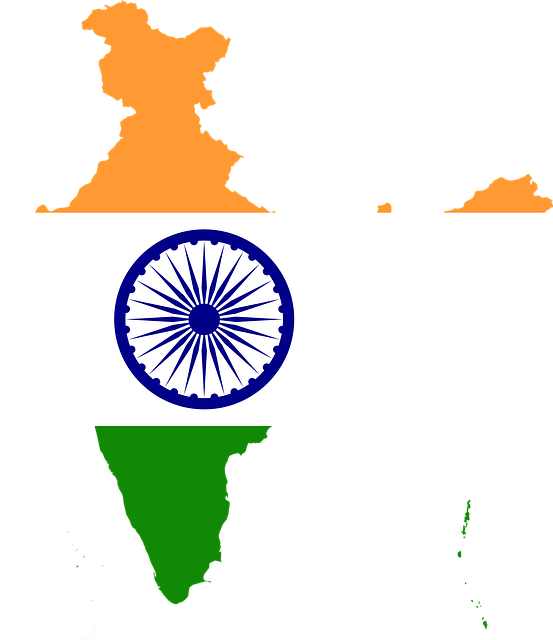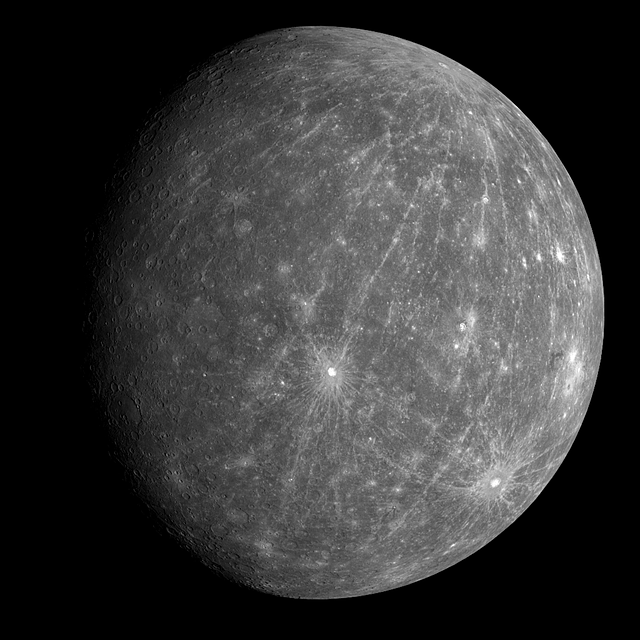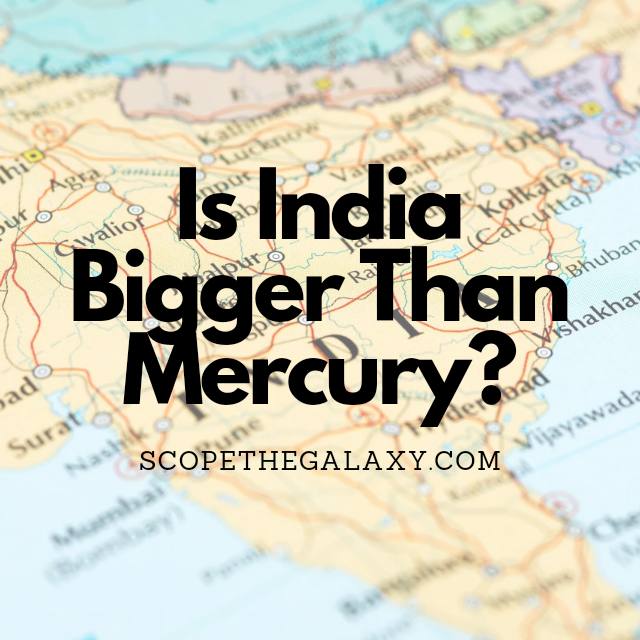*This post may contain affiliate links. This means we may make a commission if you purchase an item using one of our links*
India has a surface area of 3.28 million sq. kilometers and a volume of 154.5 million cubic kilometers while Mercury is the smallest planet but a spherical entity with a surface area of 74.79 million sq. kilometers and a volume of 60.8 billion cubic kilometers. Therefore, it only makes sense that a planet would be bigger as it is spherical whilst India is a flat land mass.
Continue reading if you want to learn more about what makes both India and Mercury as big as they are.
How Big Is India?

India is a South Asian country, which is the seventh largest by area and second most populated in the world (with over 1.3 billion people). In addition, it is the most populous democracy in the world. The Indian Ocean bounds it to the south, while the Arabian Sea covers the southwest, and the Bay of Bengal borders the southeast.
The diameter of India, measuring east to west, is 2,933km, while the extreme latitudes of north and south cover a length of 3,214km. Either way, it is smaller than the Mercury’s diameter. India’s coastline stretches over 7,000km, meaning that much of India’s landmass protrudes into the Indian ocean.
India’s total surface area is 3,287,590 sq. km and covers a diverse range of landscapes, from dry stretches of desert to snow-covered mountain peaks. Most of the central, northern, and eastern regions of India encompass the fertile lands of the Indo-Gangetic plain, while the sandy and rocky landscape of the Thar Desert occupy the west.
This fertile area – sometimes referred to as the Ganges plain – covers a large amount of India’s north and is created by soil deposits from the rivers that run from the vast Himalayan mountains. In some areas, the depth of this silt can be greater than 25,000ft!
The highest point is India is undefined because of a territorial dispute with Pakistan. The highest point within this territory (known as Kashmir) is K2, which stands at 8,611m. However, the highest point in India’s undisputed territory is Kanchenjunga which reaches a height of 8,598m.
Average crustal thickness varies between regions, ranging from 30-35 km in the plains to 80 km in the mountainous areas. Calculating the mean thickness among all these variations totals roughly 47km. If we then multiply this by the surface area, we can calculate the estimated volume of India to be 154,516,730 cubic km.
How Big Is Mercury?

Mercury is the smallest planet in the Milky Way, with a diameter of 4,878km – around 50% larger than the diameter of Mercury. At only two-fifths the size of Earth, Mercury is even smaller than the largest moons in our solar system, Ganymede and Titan.
This planet is a similar size to our moon and is only 58 million kilometers from the Sun, which means that the Sun would appear three times larger if we were standing on Mercury compared to standing on Earth. And because of this proximity, surface temperatures reach as high as 430 degrees Celsius during the day.
This rocky planet possesses an iron core that comprises a large part of the interior; it accounts for around three-quarters of Mercury’s diameter. Approximately 70% of Mercury’s weight is attributed to its iron, with the core a similar size to our moon. Atop the core sits a rocky mantle of approximately 55km in thickness.
The surface of Mercury is similar to that of our moon, with a number of impact craters caused by meteorite collisions. Some of the most significant impact basins include Caloris (with a diameter of 1,550km) and Rachmaninoff (with a diameter of 306km), created by early asteroid impacts.
Mercury has many areas of smooth terrain, along with cliffs that stretch for hundreds of kilometers and reach up to a mile into the sky. These cliffs were formed over billions of years as Mercury’s interior cooled and contracted.
And NASA’s research into these cliff-like landforms – or scarps – shows that Mercury continues to shrink. The size of the scarps displays their youth and suggests that Mercury is still tectonically active, just like Earth. As the interior continues to cool, the planet will continue to contract.
The surface area of Mercury is around 74,797,000 square kilometers, more than 8 times the surface area of the country of China.
Furthermore, Mercury is spherical in shape so it’s overall volume would blow the value of any if not all countries and continents on Earth, out of the water.
This is because Mercury’s volume of 60.8 billion cubic kilometers makes it so India’s volume doesn’t even come close to the cubic measure of even the smallest planet in our solar system.
Summary
India is a flat land mass while Mercury is a spherical planet so it only makes sense that the latter would be larger if all things are considered equal.
As a result Mercury is roughly 23 times larger in surface area and around 400 times larger in overall volume.

